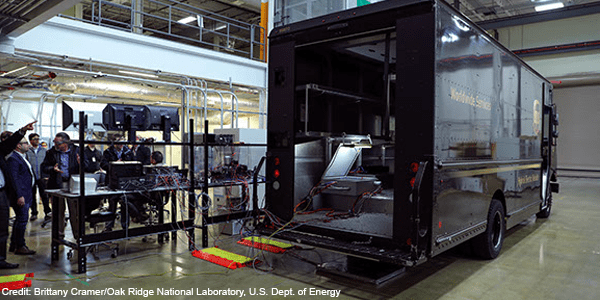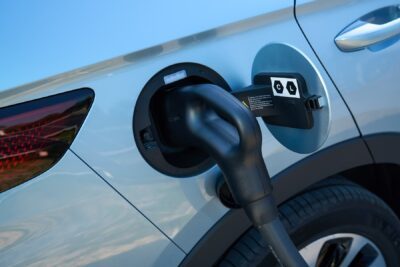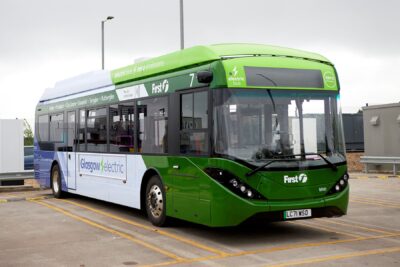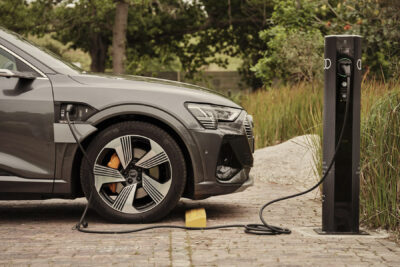Oak Ridge tests inductive bi-directional charging
Researchers at the US Department of Energy’s Oak Ridge National Laboratory (ORNL) have successfully developed and deployed a bi-directional inductive charging system on a UPS PHEV delivery vehicle. Bidirectionality was not the only feature of the experiment.
In the test, the ORNL system charged at up to 20 kW over an air gap of eleven inches (28 cm) with an efficiency of over 92 per cent. Although the demonstration test took place on 27 February, it was only now made public by the institute in an averaging process. The battery of the medium-sized van has a capacity of 60 kWh, so a charging process would take about three hours. With the standard onboard charger for wired charging, the process would take between five and six hours, according to the researchers.
More impressive than the charging power, however, is the distance between the two coils: At 28 centimetres, vehicles with higher ground clearance can also be charged without the vehicle’s charging plate having to be lowered or the plate on the infrastructure side raised to minimize the air gap.
The bidirectionality of the system is also new. This means that the vehicle battery can also be used as a mains buffer. According to the ORNL, the technology used “is fully compliant with grid power quality standards”. At least in the USA, the vehicle could be easily integrated into the grid.
Fleet operators could also benefit from the flexible use of locally generated green electricity, for example via solar modules. “Scaling the technology to a fleet of 50 trucks gives you megawatt-scale energy storage,” said Omer Onar, project manager at ORNL. The technology “represents an integrated, holistic solution for vehicle electrification that also advances the next-generation smart grid,” Onar added. Above all, it should make bidirectional charging more convenient and easier.
The technology will now be subjected to further tests and analyses as part of the project. UPS also sees the insights gained as important lessons for the electrification of delivery fleets. “This project demonstrates innovative ways to utilize vehicle battery storage at fleet scale to power the vehicle, add resiliency to our facilities and support the grid,” said Mike Whitlatch, vice president of procurement for the logistics provider.
Researchers at the Oak Ridge laboratory first demonstrated a 20-kW wireless charging system for an electric car in 2016. The technology has since been scaled to 120 kilowatts of charging power –but with a much smaller air gap than in the UPS van test.






0 Comments